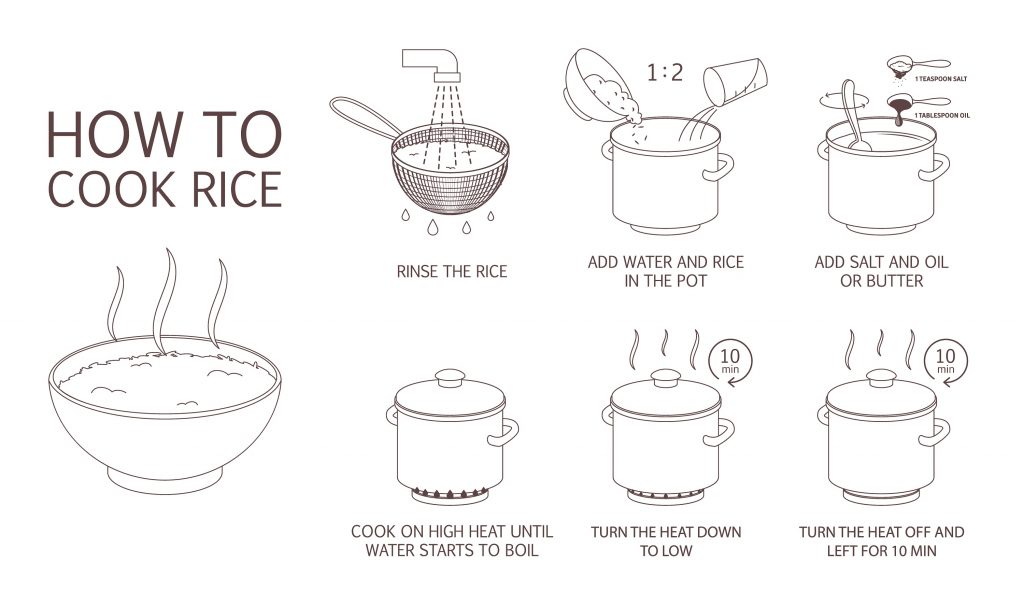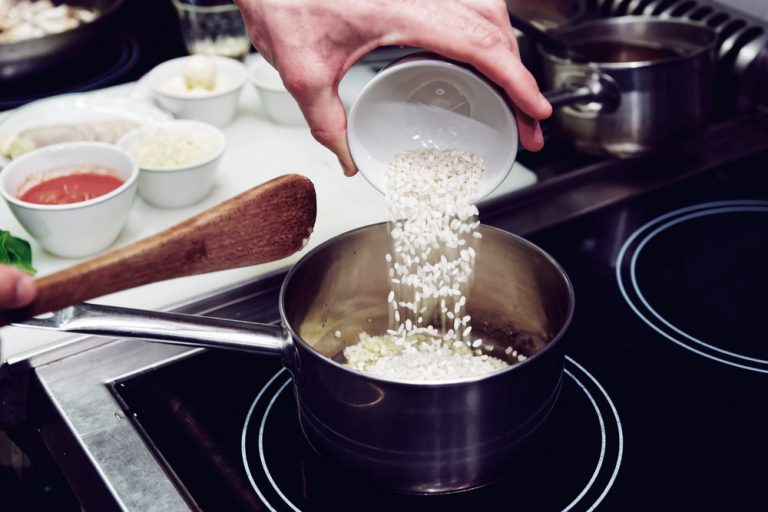The first fundamental mistake that can be made when preparing rice or groats is to cook them in bags. This is most often chosen by people who are comfortable and lack basic knowledge about the amount of water needed to cook this type of grain optimally.
Cooking rice in a bag
Why not boil groats and rice in bags? The first argument is that they contain bisphenol-A. This is a chemical substance used in the manufacture of plastics. When cooking in such packaging it is absorbed by the food product.
The impact of bisphenol-A on human health are under constant observation. Studies carried out on animals exposed to high doses of this substance indicate that it interferes with the action of the nervous system, destabilises the hormonal balance and leads to behavioural disorders. In addition, it (probably) damages the liver and promotes the accumulation of abdominal fat, obesity and type II diabetes.
Despite the many divergent data on the scale of the harmfulness of bisphenol A to the human body, it is worth abandoning the cooking of groats and rice in plastic bags. An additional argument should be the fact that during such preparation, they are heated in too much water - this causes a much more significant loss of soluble ingredients, which reduces the nutritional value of the dish.
Cooking rice and groats - how much water and time do you need?
An appropriate ratio of water to the amount of cooked groats or rice is a basic condition for preparing a tasty dish and preserving all the nutrients. An excessive amount of liquid causes the product to overcook, loss of ingredients such as minerals, e.g. potassium, B vitamins, and a decrease in the taste of grain. For the above reasons, it is worthwhile to cook groats and rice in a minimum amount of water, under cover, limiting the cooking time to the necessary minimum.

In order to cook loose rice or groats, it is worth remembering the ratio of the product to water and to estimate the processing time well. These are
- for buckwheat groats - 1 portion of groats for 2 portions of water - cooking time about 15-20 minutes
- for barley groats a bundle - 1 portion of groats for 3 portions of water - cooking time about 30-45 minutes
- for lamb groats - 1 portion of groats for 2-2.5 portions of water - cooking time about 15-20 minutes
- for parabolic rice - 1 portion of rice for 1 and 3/4 portions of water - boiling time about 12-18 minutes
- for brown rice - 1 portion of rice for 2 portions of water - cooking time about 30 minutes
However, there are some exceptions to these rules. Sometimes boiling more water can help to get rid of harmful pollutants. This mainly concerns rice, which, if consumed in large quantities, can become a source of harmful arsenic.
This element occurs naturally in nature, but as a result of agricultural and industrial pollution, its quantity in the ecosystem in some regions of the world can pose a health risk. Rice and its derivatives, in particular, have the ability to accumulate this element.
To reduce the risk of exposure to arsenic, it is recommended to boil the rice in a higher amount of water and rinse it thoroughly before preparation.
Boiled rice and groats vs. glycemic index
During cooking, the groats and rice absorb water, so that the starch contained in their grains swells and breaks up. By heat treatment, these products become digestible for the digestive tract and can provide energy in the form of carbohydrates as well as fibre, vitamins and minerals. However, if they are cooked for too long and in too much water, the grains may become too much and the raw material may boil.
This phenomenon will not be desirable in most cases. An exception to this rule is easily digestible diet. In a healthy person's diet, it is recommended to eat loosely boiled groats and rice - they have a lower glycemic index, i.e. blood glucose levels increase more slowly after consumption. This translates into a smaller and slower release of insulin, a hormone that allows glucose to be used as fuel for cells. This keeps satiety after a meal for longer, which greatly facilitates appetite control.






